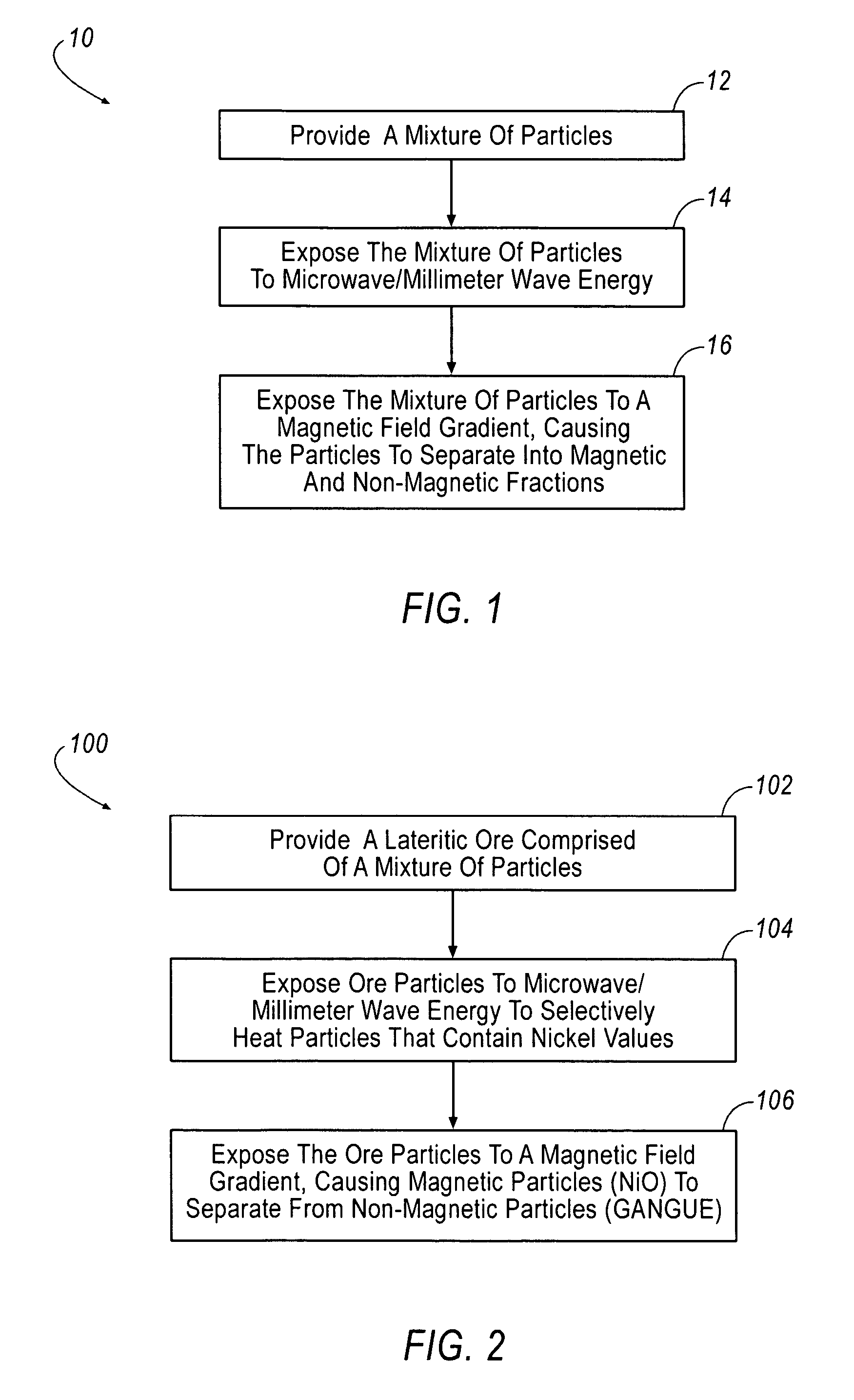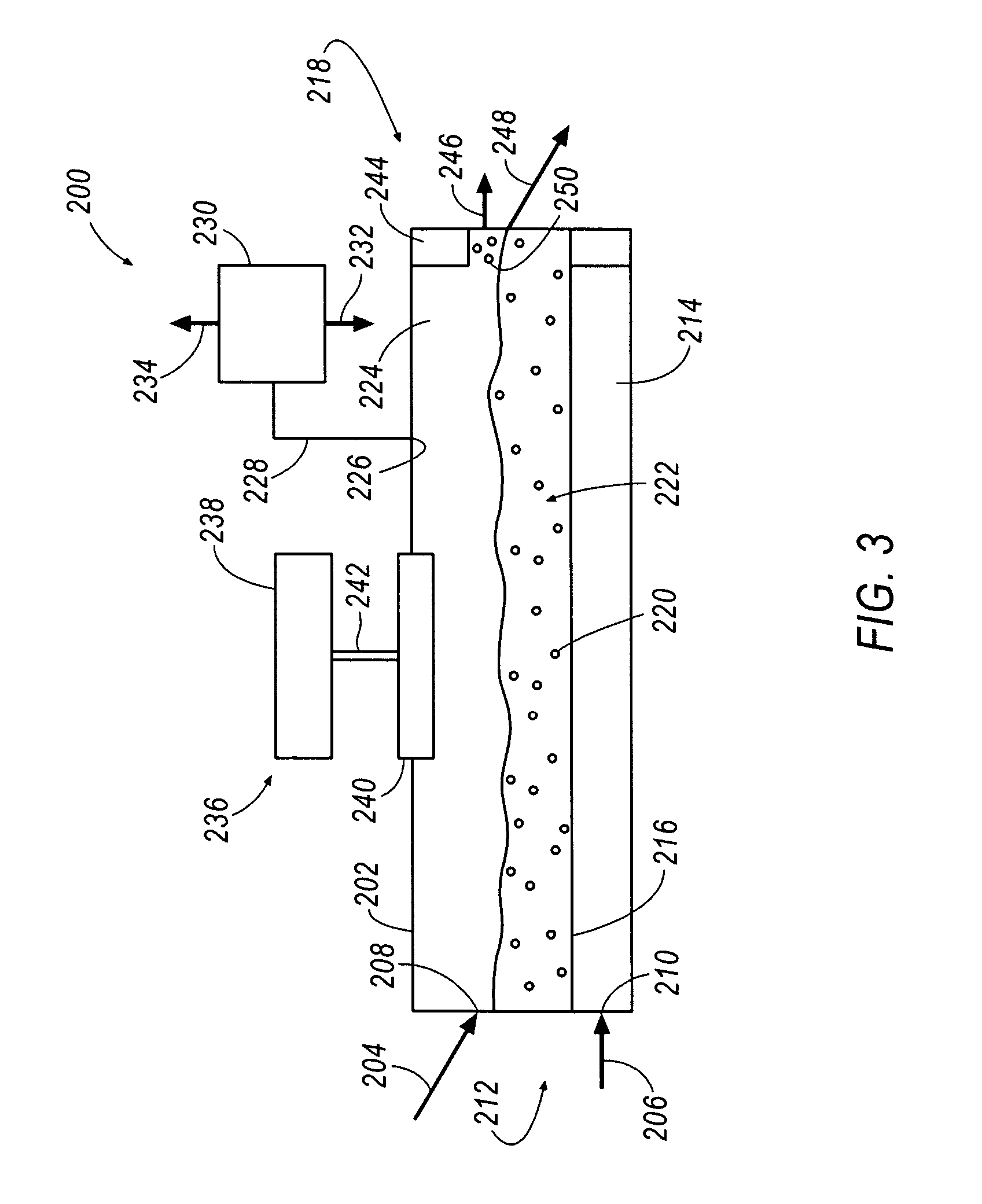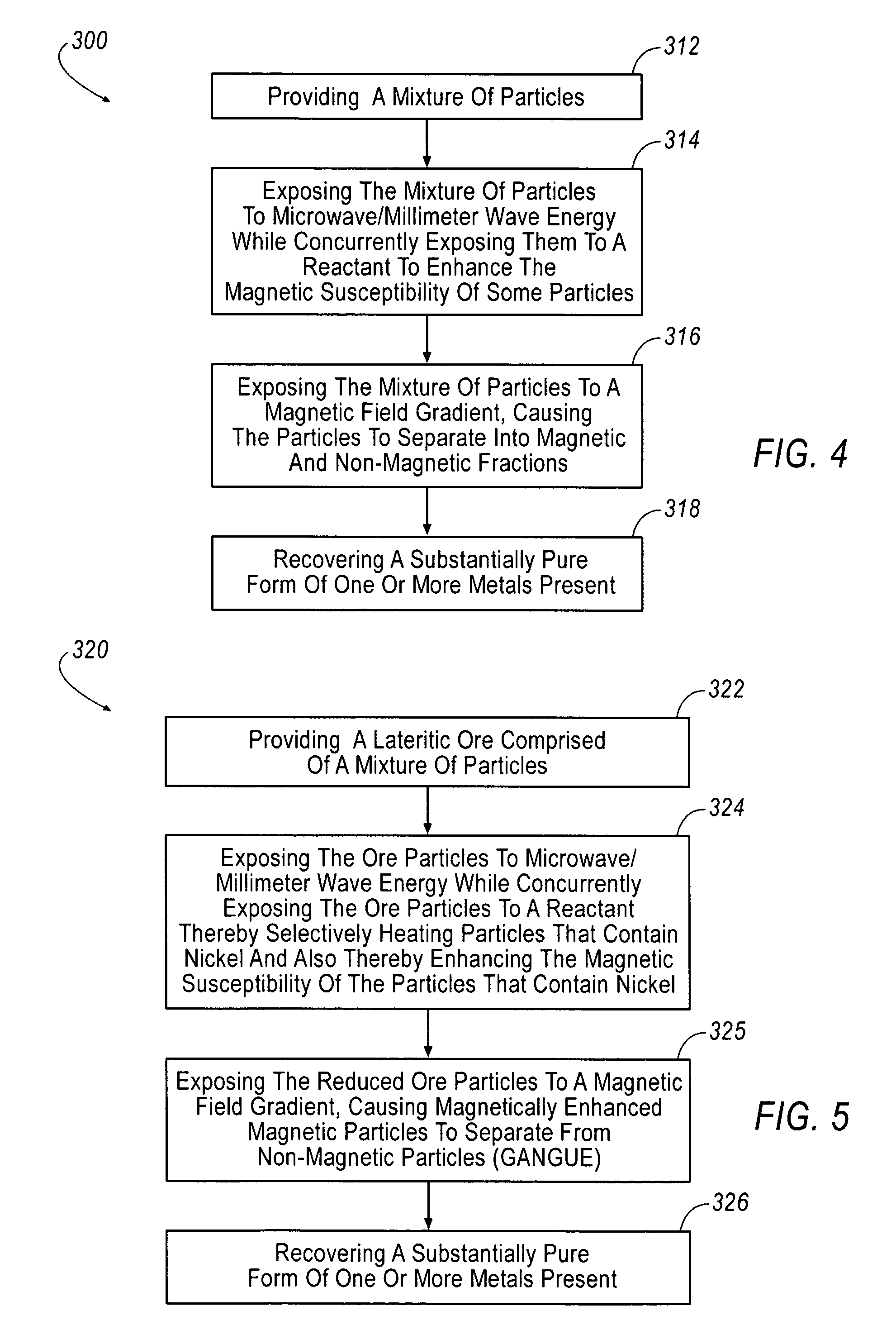Method for separating metal values by exposing to microwave/millimeter wave energy
a technology of microwave/millimeter wave energy and metal values, applied in the field of mineral processing, can solve the problem of low capital outlay than batch operation, and achieve the effect of saving energy resources and lowering capital outlay
- Summary
- Abstract
- Description
- Claims
- Application Information
AI Technical Summary
Benefits of technology
Problems solved by technology
Method used
Image
Examples
Embodiment Construction
[0029]FIG. 1 provides an overview of a method 10 of separating components of a mixture of particles. The method relies on heating groups of particles to different temperatures using microwave / millimeter wave energy, and then exploiting changes in magnetic susceptibility among the particles—resulting from the temperature differences—to effect a magnetic separation of the groups of particles. The method can be used to extract metal values from mineral ores that ordinarily are not amenable to physical separation techniques. For example, and as discussed below, the method can be used to concentrate nickel values from lateritic ores without the high temperatures, high pressures, and harsh acidic conditions associated with acid leaching. Unless clear from the context of the discussion, the terms “nickel,”“cobalt,” and “iron” or “nickel values,”“cobalt values,” and “iron values,” etc. may refer, respectively, to nickel, cobalt and iron atoms or to compounds that contain nickel, cobalt and ...
PUM
| Property | Measurement | Unit |
|---|---|---|
| temperature | aaaaa | aaaaa |
| pressure | aaaaa | aaaaa |
| temperature | aaaaa | aaaaa |
Abstract
Description
Claims
Application Information
 Login to View More
Login to View More - R&D
- Intellectual Property
- Life Sciences
- Materials
- Tech Scout
- Unparalleled Data Quality
- Higher Quality Content
- 60% Fewer Hallucinations
Browse by: Latest US Patents, China's latest patents, Technical Efficacy Thesaurus, Application Domain, Technology Topic, Popular Technical Reports.
© 2025 PatSnap. All rights reserved.Legal|Privacy policy|Modern Slavery Act Transparency Statement|Sitemap|About US| Contact US: help@patsnap.com



